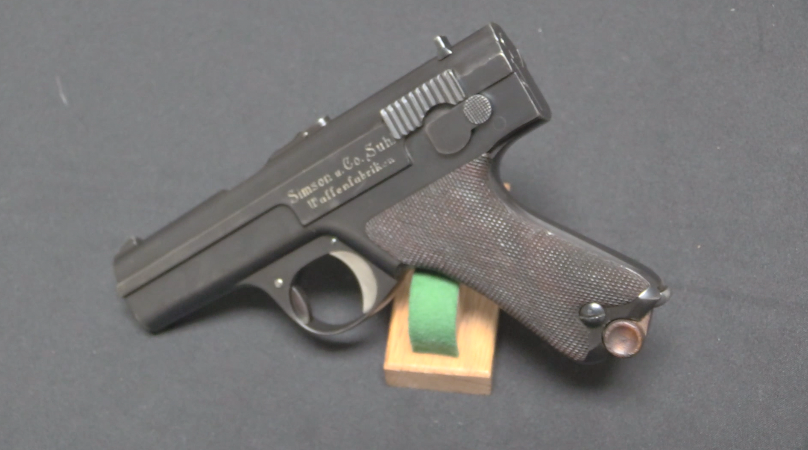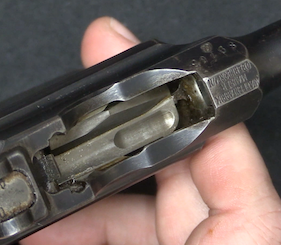This particular 1902-made example of the C96 Mauser incorporates several experimental features of the design that would never go into mass production. It was an effort to make a version of the C96 that would be more suitable for civilian carry – something a bit lighter and more compact than the military style. To this end, it has a smaller grip profile, a shorter barrel, and a shortened 6-round magazine. Most evidently, it also has an experimental safety that was intended to be more suitable for one-handed use. Unfortunately, the safety bit into the shooters hand badly with each shot, and only a few were ever made before the idea was dropped.
Related Articles

Prototype
RIA: 1929 Simson Prototype 9mm
In the late 1920s, German Ordnance hinted at an interest in replacing the P.08 Luger pistols with a less expensive handgun design. This prompted a number of submissions from hopeful companies, including this design from […]

Single-shot Pistol
Bavarian Lightning: The 1869 Werder Pistol
This is a lot in the upcoming February 2020 Morphy Field & Range auction. Adopted by Bavaria in 1869, Johann-Ludwig Werder’s breechloading rifle was a brilliant piece of engineering, offering an automatically ejecting falling-block system […]

Semiauto pistol
Just Too Powerful: The C96 in 9mm Mauser Export
In an effort to widen its potential marked for the C96 pistol, Mauser offered it in 9x25mm (aka 9mm Mauser Export) as well as the much more common 7.63x25mm cartridge. The 9mm cartridge was made […]

IIRC, the original c/96 safety held the hammer locked but did nothing to secure the sear or trigger. Meaning, if the trigger was pressed when the gun was in Condition One, releasing the safety would drop the hammer and fire the piece. The NS “New Safety” locked sear and hammer both to avoid this booby-trap.
I always wondered why the Broomhandle never had a cross-bolt firing-pin safety. The block that secured the firing pin and concentric spring inside its barrel extension would have been a reasonable place for it. Just a sliding bar that locked the firing pin, and perhaps even withdrew it forward just far enough that if the hammer was dropped by accident, it couldn’t transfer the blow to the firing pin.
Such a safety would have been more reliable and probably a bit simpler to machine than any of the safeties they actually did use.
cheers
eon
NS safety does not lock the sear. It seems some confusement occured. Ît only holds the hammer at more distance form the sear and needs two hands to actuate.
[shoots mugger] “EEEYOWCH! Who designed this safety catch?”
I am afraid the 1902 safety might have been force matched to the frame during the restauration…
The 41676 is definitely made in 1905 and the frame is consistent with the period (small ring hammer) six-shooters, whereas the 1902 “Joint Safety” (Gelenkihe Sicherung) mechanism is only found (except this one) in 28,xxx-29,xxx range.
I was just at an auction in Rolla Missouri.
Lotd of c96 were on the block.
Joint Safety SN 50002 sold for $10,000